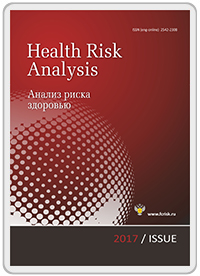Effectiveness of multiple micronutrient supplements for supporting adequate hemoglobin, ferritin, and zinc levels among children aged 6–11 months in rural Vietnam: A randomized control trial
Pham Van Doanh1, Tran Thi Minh Nguyet2, Tran Thuy Nga2, Le Thi Thuy Dung3
1Ho Chi Minh City University of Technology and Education, 1 Vo Van Ngan Str., Linh Chieu Ward, Thu Duc City, Ho Chi Minh City, 70000, Vietnam
2National Institute of Nutrition, 48B Tang Bat Ho Str., Hanoi, 100000, Vietnam
3Thu Dau Mot University, 6 Tran Van On Str., Phu Hoa Ward, Thu Dau Mot City, Binh Duong Province, 75100, Vietnam
Micronutrient deficiencies remain a major public health concern among infants in rural Vietnam. Nutrition during the 6–11-month period, which is characterized by the introduction of complementary feeding, plays a critical role in child development. This study aimed to evaluate effectiveness of a multiple micronutrient supplement, Bibomix, for improving hemoglobin, ferritin, and zinc levels in children aged 6–11 months.
A double-blind, randomized controlled trial was conducted across 10 communes in Quang Xuong District, Thanh Hoa Province, Vietnam. A total of 360 infants were randomly assigned to either an intervention or control group stratified by age and sex. The intervention group received a daily sachet of Bibomix, while the control group received a placebo for 12 months.
After 12 months, the intervention group showed significantly greater improvements than the control group in hemoglobin levels (Mean ± SD: 7.9 ± 7.2 g/L vs. 3.9 ± 1.3 g/L; Difference-in-Differences (DID) = 4.41; p < 0.001), ferritin concentrations (Median [IQR]: 8.5 [1.0–16.6] vs. 5.52 [-7.4–13.4]; DID = 2.97; p = 0.001), and serum zinc levels (Mean ± SD: 1.67 ± 1.33 vs. 1.26 ± 1.47 µmol/L; DID = 0.41; p = 0.008). The intervention also reduced anemia prevalence by 18.4 % (RR = 25.0; 95 % CI: 1.8–333.3) and zinc deficiency by 31.0 % (RR = 7.1; 95 % CI: 3.3–14.3).
The multiple micronutrient supplementation program demonstrated significant efficacy in improving key micronutrient statuses among infants in rural areas. Scaling up this nutritional intervention is recommended for regions with high rates of anemia and micronutrient deficiencies.
- Le Danh Tuyen, Huynh Nam Phuong [The golden 1,000 days – A window of opportunity not to be missed]. Journal of Nutrition and Food, 2015, vol. 11, pp. 1–5 (in Vietnamese).
- Albelbeisi A., Shariff Z.M., Mun C.Y., Rahman H.A., Abed Y. Multiple micronutrient supplementation improves growth and reduces the risk of anemia among infants in Gaza Strip, Palestine: a prospective randomized community trial. Nutr. J., 2020, vol. 19, no. 1, pp. 133. DOI: 10.1186/s12937-020-00652-7
- Martorell R. Improved nutrition in the first 1000 days and adult human capital and health. Am. J. Hum. Biol., 2017, vol. 29, no. 2, pp. e22952. DOI: 10.1002/ajhb.22952
- Cusick S., Georgieff M.K. The first 1,000 days of life: The brain’s window of opportunity. UNICEF, 2016. Available from: https://www.unicef-irc.org/article/958-the-first--days-of-life-the-brain... (June 17, 2025).
- Stevens G.A., Finucane M.M., De-Regil L.M., Paciorek C.J., Flaxman S.R., Branca F., Peña-Rosas J.P., Bhutta Z.A. [et al.]. Global, regional, and national trends in haemoglobin concentration and prevalence of total and severe anaemia in children and pregnant and non-pregnant women for 1995–2011: a systematic analysis of population-representative data. Lancet Glob. Health, 2013, vol. 1, no. 1, pp. e16–e25. DOI: 10.1016/S2214-109X(13)70001-9
- Gedfie S., Getawa S., Melku M. Prevalence and associated factors of iron deficiency and iron deficiency anemia among under-5 children: a systematic review and meta-analysis. Glob. Pediatr. Health, 2022, vol. 9, pp. 2333794X221110860. DOI: 10.1177/2333794X221110860
- Stevens G.A., Paciorek C.J., Flores-Urrutia M.C., Borghi E., Namaste S., Wirth J.P., Suchdev P.S., Ezzati M. [et al.]. National, regional, and global estimates of anaemia by severity in women and children for 2000–19: a pooled analysis of population-representative data. Lancet Glob. Health, 2022, vol. 10, no. 5, pp. e627–e639. DOI: 10.1016/S2214-109X(22)00084-5
- Tesema G.A., Worku M.G., Tessema Z.T., Teshale A.B., Alem A.Z., Yeshaw Y., Alamneh T.S., Liyew A.M. Prevalence and determinants of severity levels of anemia among children aged 6–59 months in sub-Saharan Africa: A multilevel ordinal logistic regression analysis. PLoS One, 2021, vol. 16, no. 4, pp. e0249978. DOI: 10.1371/journal.pone.0249978
- Eussen S., Alles M., Uijterschout L., Brus F., van der Horst-Graat J. Iron intake and status of children aged 6–36 months in Europe: a systematic review. Ann. Nutr. Metab., 2015, vol. 66, no. 2–3, pp. 80–92.
- Rezanova N.V. Prevalence of iron deficiency anemia in children across 88 regions of Russia. Zdravookhranenie Chuvashii, 2020.
- Skalny A.V., Sotnikova T.I., Korobeynikova T.V., Tinkov A.A. Significance of zinc deficiency correction for practical medicine: a review. Sechenov Medical Journal, 2022, vol. 13, no. 4, pp. 4–17. DOI: 10.47093/2218-7332.2022.13A4-17 (in Russian).
- General Nutrition Survey 2019–2020. National Institute of Nutrition. Hanoi, Medical Publ. House, 2021.
- Huynh Van Dung [Effectiveness of nutrition education using local micronutrient-rich foods on nutritional status of children aged 6–23 months in a northern midland district], 2019 (in Vietnamese).
- Jack S.J., Ou K., Chea M., Chhin L., Devenish R., Dunbar M., Eang C., Hou K. [et al.]. Effect of micronutrient sprinkles on reducing anemia: a cluster-randomized effectiveness trial. Arch. Pediatr. Adolesc. Med., 2012, vol. 166, no. 9, pp. 842–850. DOI: 10.1001/archpediatrics.2012.1003
- Tiwari S., Bharadva K., Yadav B., Malik S., Gangal P., Banapurmath C.R., Zaka-Ur-Rab Z., Deshmukh U. [et al.]. Infant and young child feeding guidelines, 2016. Indian Pediatr., 2016, vol. 53, no. 8, pp. 703–713. DOI: 10.1007/s13312-016-0914-0
- Young C. Infant and young child feeding. J. Nutr., 2011, pp. 11–13.
- Nguyen D.A., Nguyen T.H. [Routine laboratory tests in clinical practice – CRP testing]. Hanoi, Hanoi Medical University Press Publ., 2013, pp. 526–530 (in Vietnamese).
- Nguyen Thanh Ha [Effects of zinc and multiple micronutrient sprinkles supplementation on stunted children aged 6–36 months in Gia Binh District, Bac Ninh Province]. National Institute of Nutrition, 2011 (in Vietnamese).
- Nguyen Minh Sang [Overview of CRP application in respiratory medicine]. Department of Respiratory – Allergy, Huu Nghi Hospital, 2017 (in Vietnamese).



 fcrisk.ru
fcrisk.ru

